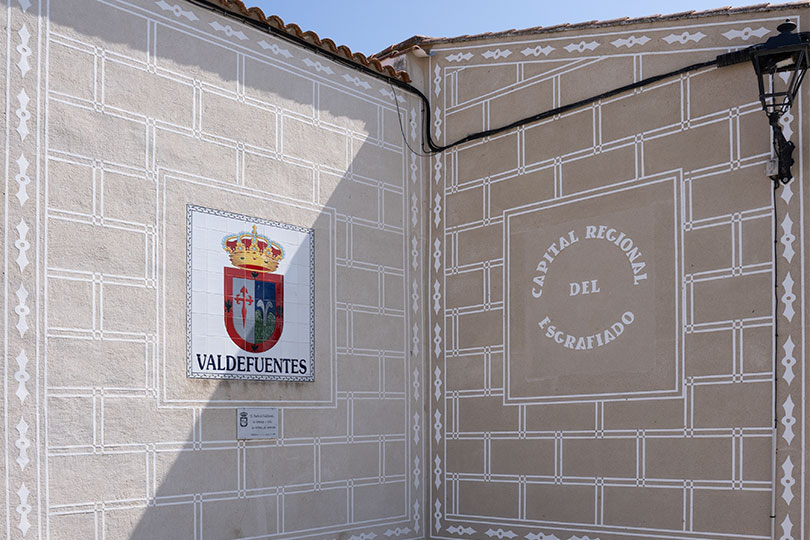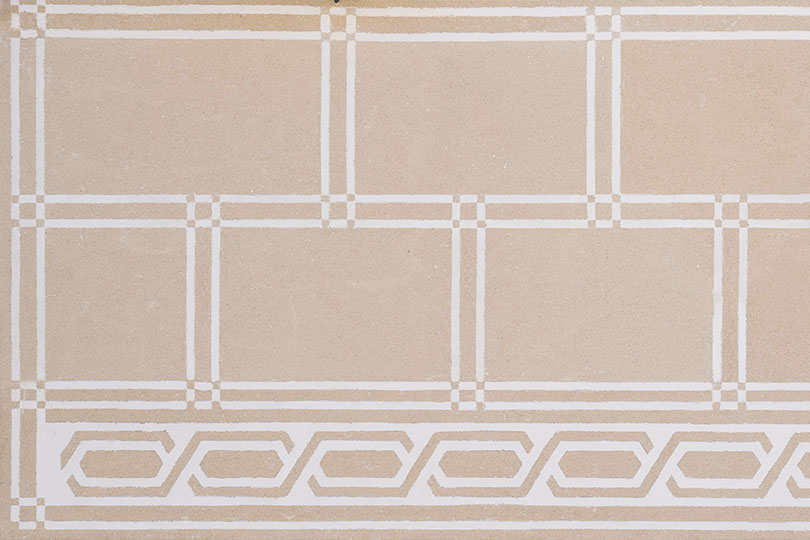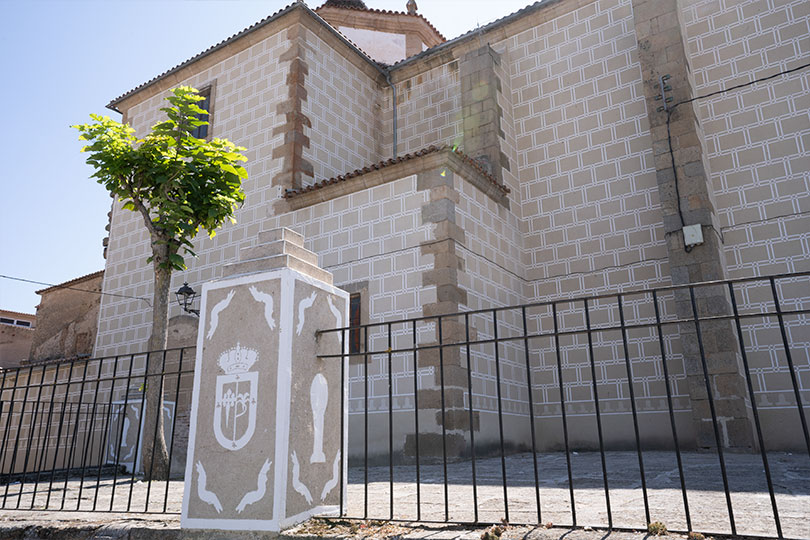Sgraffito and Its Development
In the heart of the Sierra Montánchez region, just 32km from Cáceres, Trujillo, and Miajadas, and 50km from Mérida, lies Valdefuentes, a town steeped in history, culture, and tradition whose origins date back to the Bronze Age. With intense Roman colonization, as evidenced by the remains of funerary steles, Roman bridges, and other discoveries, this town belonged to the Order of Santiago, from which it separated with papal permission, subsequently incorporating into the crown. Due to its geographical location and entrepreneurial character, Valdefuentes is considered one of the municipalities with the greatest economic, social, and tourist potential in the region.

Photo of Sgraffito in Valdefuentes with the town’s coat of arms and the coat of arms of the Regional Capital of Sgraffito.
Among the most prominent tourist attractions are iconic places like the ‘Convent of San Agustín’, popularly known as the ‘Little Escorial’. This building, considered one of the Seven Wonders of the region, houses fascinating motifs of great historical and artistic value in its cloister: sgraffiti. This technique, inherited from the Muslim world and the Italian Renaissance, involved making incisions in the surface layer of the wall to reveal the underlying layer, of a different color. A decorative method that allowed to embellish facades and give greater importance to buildings when the construction materials were scarce.


Although sgraffiti are commonly found on facades of traditional architecture, such as the town hall, the Civil Guard barracks, the Municipal Park ‘El Regajo’, or old manor houses, this technique was also widely used in the interior decoration of civil, military, and religious buildings with various motifs, such as brick imitation with vegetal shapes, geometric figures, or the use of borders, among many others.
Of all the province of Cáceres, Valdefuentes is the municipality with the highest number of buildings employing this decorative technique, with around 250 houses. The importance of sgraffito in the region is such that in October 2013, the Government of Extremadura designated Valdefuentes as the ‘Regional Capital of Sgraffito’. Furthermore, many studies of popular architecture assert that the town is the main center for the use of sgraffito, making this technique a distinctive feature of Valdefuentes that has been passed down perfectly from generation to generation.


Otra de las cualidades destacadas de la localidad es la multitud de pozos que posee. Y es que Valdefuentes recoge más de 200 pozos privados destinados principalmente para el consumo humano o el abrevadero de animales. Así mismo, la localidad también cuenta con pozos de libre acceso para todos los vecinos donde destacan el Pozo de la Fuente del Concejo, Pozo de la Plazoleta o Pozón, Pozo Grande del Regajo, Pozo Lavar o Pozo Airón, entre muchos otros.
